Oman Resume Formats, Templates, and Writing Tips
Applying for a job in Oman? This Oman resume guide has some tips, FAQs, and templates to inspire you to write the perfect resume.
Are you applying for a job in Oman? If so, it’s important to learn how to write an Oman resume. Employers have requirements for an Oman resume that you might not be expecting.
In this guide, we will discuss the most important steps, tips, and tricks to writing a great Oman resume. Whether you are looking to move to Oman for work, or you already live there and just need a great resume, this article will have some useful information for you.
First, we will discuss some common resume questions. Then, we will take you through the steps to writing a great Oman resume.
Common Oman resume questions
Before you get started, let’s answer some common questions that people have about writing an Oman resume.
What personal details should you include in your Oman resume?
In an Oman resume, it is important to include your contact information. At the top of your resume be sure to include your:
- Name
- Phone Number
- Email Address
- Home Address
Many employers will also expect additional personal details. You will likely want to include a Personal Details section that includes your:
- Date of birth
- Nationality
- Marital Status
- Health
If relevant, you can also include your:
- Place of Birth
- Gender
- Number of Children
- Driver’s License

Should you include your picture on an Oman resume?
It’s common to include a photograph of yourself on your Oman resume. This is particularly true if your appearance is relevant to the job. It is not mandatory, however. When writing an Oman resume, consider whether you think a picture will improve your application or not before including it.
How long should your Oman resume be?
Ideally, your resume should be one page long.
If you have been in the workforce for several years, you might think that you can’t condense your experience to a single page, but it’s more than possible with a little editing. If you have too many accomplishments to fit on one page, try removing some so that you’re only listing the best ones. A single resume with only the most impressive achievements will do better than a long resume with too many irrelevant details.
A two-page resume may be acceptable if you are a high-level executive with years of experience and you really can’t fit all of your experience on one page. Only do this if you are certain your second page is completely necessary, however. Hiring managers aren’t likely to read a second page if they can avoid it.
Should you customize your Oman resume?
Yes, it’s important to customize your Oman resume for every application.
Always study the job description carefully so that you understand exactly what skills and experience the company is looking for. You can even study the company online to learn its mission statement and values. Then, edit your resume so that those exact requirements are met. This will guarantee that recruiters, hiring managers, and applicant tracking systems all know that you are perfect for the job.
How to write an Oman resume
A great Oman resume has the right format, the right sections, and the right template. To get started, make sure to follow these steps:
Oman resume format
There are three primary resume formats to consider when writing a resume for Oman: Reverse-chronological, functional, and combination. When you write your Oman resume, it’s important to consider your previous jobs and your career goals when deciding which format to use.
Reverse-chronological Oman resume format
In a reverse-chronological resume format, the Work Experience section is the largest and most important component of the resume. In this section, past jobs are listed in reverse-chronological order, beginning with your current or most recent job and working backwards. In a reverse-chronological resume format, the skills section is still important, but it can be shorter than the Work Experience section.
This resume format is ideal for most job-seekers. Reverse-chronological resumes are common in Oman, and this is the format most employers will be expecting. If you have had a typical career with a straightforward career progression, this is the resume format you should choose.
Functional Oman resume format
In a functional resume format, the Skills section is the most important part of the resume, and the Work Experience section is given less attention. In the Skills section of a functional resume, each skill or skill area can have its own heading, with descriptions or examples of each skill underneath. In the Work Experience section, past jobs are ordered by relevance instead of chronology, and job descriptions are either short or omitted.
The functional resume format is used by some job-seekers with unusual career paths, as it emphasizes skills over work experience. However, most employers prefer a clear timeline of your career, so if you would like to emphasize your skills rather than your work experience, we recommend using a combination resume format instead.
Combination Oman resume format
In a combination resume format, the Skills section is the largest and most important part of the resume, but the Work Experience section maintains its reverse-chronological organization. This resume format combines the best features of the reverse-chronological format and the functional format, allowing you to showcase your relevant skills while retaining a clear timeline of your career history.
As with the functional resume format, the skills in the Skills section of a combination resume each have their own heading, with a description or selection of achievements underneath. In the Work Experience section, past roles are listed in order, but job descriptions are short or left out entirely.
If you have had a non-traditional career path, with gaps, job-hopping, or a notable career change, the combination resume may work for you. This resume format allows you to highlight all of your most relevant skills and achievements in a prominent skills section, while allowing your previous roles to take a back seat. This can be useful if the relevance of past roles is not obvious, or if you are attempting to change careers and move into a new industry.
Which resume format should you use for your Oman resume?
For most job-seekers, a reverse-chronological resume is the right choice for an Oman resume.
However, exactly which resume format you use for your Oman resume will depend on your work experience and your career. If you have had a typical career, and there are no surprising elements in your past jobs, a reverse-chronological resume is likely your best bet. This format works well in any industry, and is the one that employers are used to seeing.
If your career has been less typical, and you have had long gaps or changed industries, you may want to highlight your most impressive and most transferable skills instead of your past roles. If this is the case, a combination resume format may work for you.
Oman resume contact information
As with any resume, it’s important to give the employer ways to easily contact you. At or near the top of your resume, make sure to include your:
- Name
- Phone Number
- Email Address
- Home Address
These details should be very easy for the employer to find. Make sure they are up-to-date, professional, and accurate.

Oman resume personal information
In Oman, it is common to include a section for personal information in your resume. In this section, provide a simple bulleted list with your personal details. Common personal details to include are:
- Date of birth
- Nationality
- Marital Status
- Health Status
While these personal details are not exactly mandatory, many employers will be expecting them. There may be other details relevant to the job as well, such as:
- Place of Birth
- Gender
- Number of Children
- Driver’s License
If you feel that this information is relevant to your application, or will improve your candidacy, be sure to include them in a Personal Information section of your resume. The Personal Information section can be included near the top of your resume, right beneath your contact information, or at the bottom, underneath your work history and skills. Simply decide where it looks best and will best benefit your application.
Oman resume summary
It is common to include a summary or personal profile near the beginning of your Oman resume. Your summary is a brief pitch to employers selling your abilities and experience. In a few sentences or bullet points, offer the hiring manager a few key achievements and skills that tell them exactly what you will bring to the company.
Your summary is simply a way to introduce yourself. This section can be short, and some job-seekers leave it out entirely, but an effective summary can be exactly what your resume needs to get the employer interested.
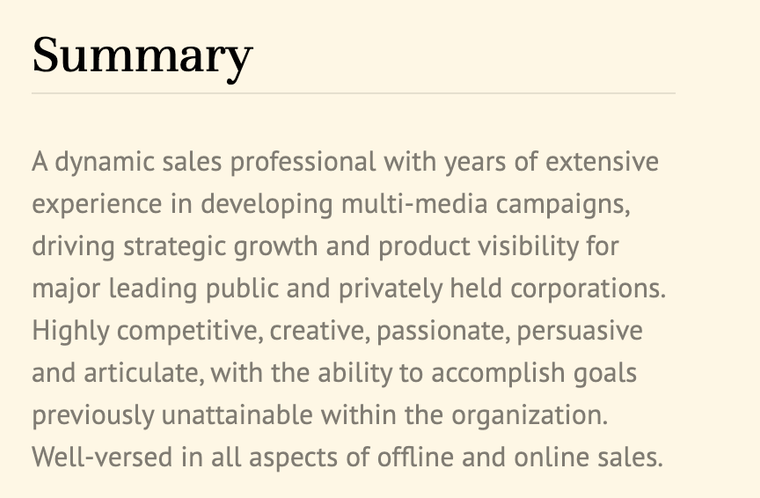
Oman resume work experience
If you are writing a typical reverse-chronological resume, your work experience section will be the most important component. It will be the longest section, and the section with the most detail.
In your Work Experience section, list past jobs in reverse-chronological order, beginning with your most recent job and working backwards. For each position, make sure to include the:
- Job title
- Company name
- Dates of employment
- Job description
For past jobs, include the start date and end date of the role. If you are currently employed, make sure to note that you are still working there with “current” or “present”. If you have a gap in your resume, try to explain it on the page; a single sentence that briefly explains why you weren’t employed will be enough.
The key to a successful work experience section is in the job descriptions. If you want your resume to be effective, make sure you can describe your accomplishments in a way that is both impressive and readable.
To do this, start by coming up with a list of achievements from each role. Accomplishments like deals you landed, projects you led, or teams you managed can all work for your resume. You can also look for quantifiable achievements, like profits, customer success scores, or user growth. Numerical examples of your success are strong, concrete ways to demonstrate your abilities, and they look great on a resume.
Further, make sure to use active language when describing your work experience. Strong verbs like “spearheaded”, “managed”, and “developed” all sound more impressive than “was responsible for”. A boring list of duties is not likely to impress a hiring manager as much as an engaging list of times you showed leadership and initiative.
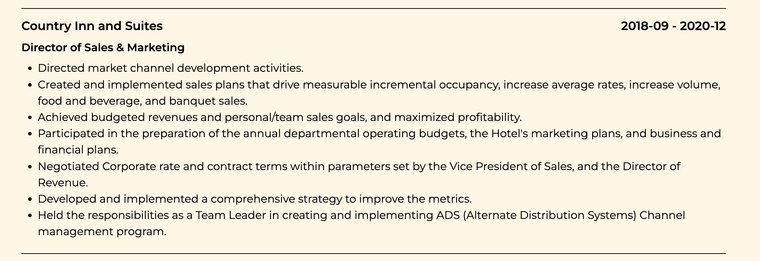
Oman resume education
Your Education section is very important to your Oman resume. An impressive education is a great way to impress hiring managers, so it’s important to make sure your education is easy to read.
In your Education section, list your degrees in reverse-chronological order. For each item, list the:
- Degree name and major or specialization
- School name
- Graduation month
If you are an experienced professional who has been in the workforce for a few years, this will be enough information. Your Education section should be short so your Work Experience section can do the talking.
If you are a student or recent graduate, however, you may want to include more details in your Education section so you can fill out your resume. Information might include coursework, relevant projects, research areas, or GPA (as long as it’s high).

Oman resume skills
In your Skills section, provide a list of your most impressive and most relevant skills. This is where you can show off all of your important abilities, so the hiring manager will know exactly where your skill set lies.
For a simple and readable skills section, list skills in a bulleted list. Make sure to place the most important skills right at the top where they will be seen.
For a more detailed skills section, especially in a functional or combination resume format, you can make each skill or skill area a heading and provide descriptions of the skill underneath. With VisualCV, you can even add a strength rating to each skill for some visual flair.

Oman resume templates
When writing an Oman resume, it can help to begin with a resume template. In Oman, it is common to use traditional resume templates, with simple structure, plenty of white space, and clear headings.
VisualCV’s Standard resume template, for example, uses a readable one-column format that will work well for Oman job applications.
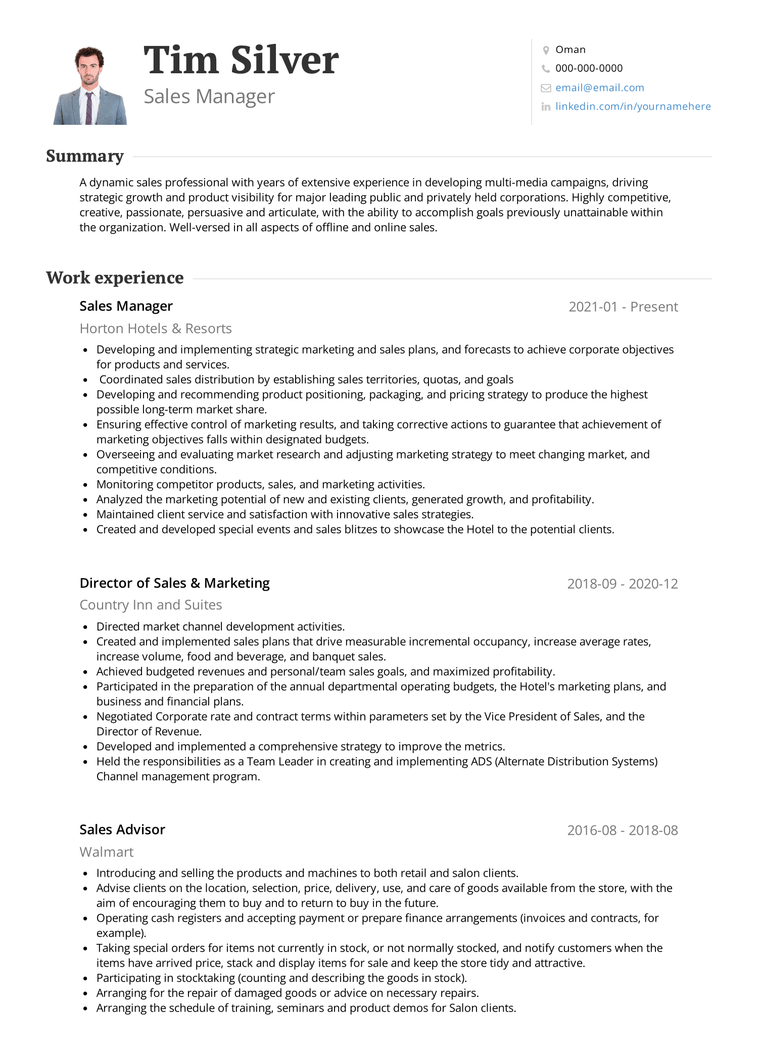
If you would like to introduce some more interesting design elements, however, you may want to try a two-column resume, like VisualCV’s Corporate resume template. This template maintains a traditional appearance, but allows for a second column that works great for list-type resume sections, such as Skills, Personal Information, or Certifications.
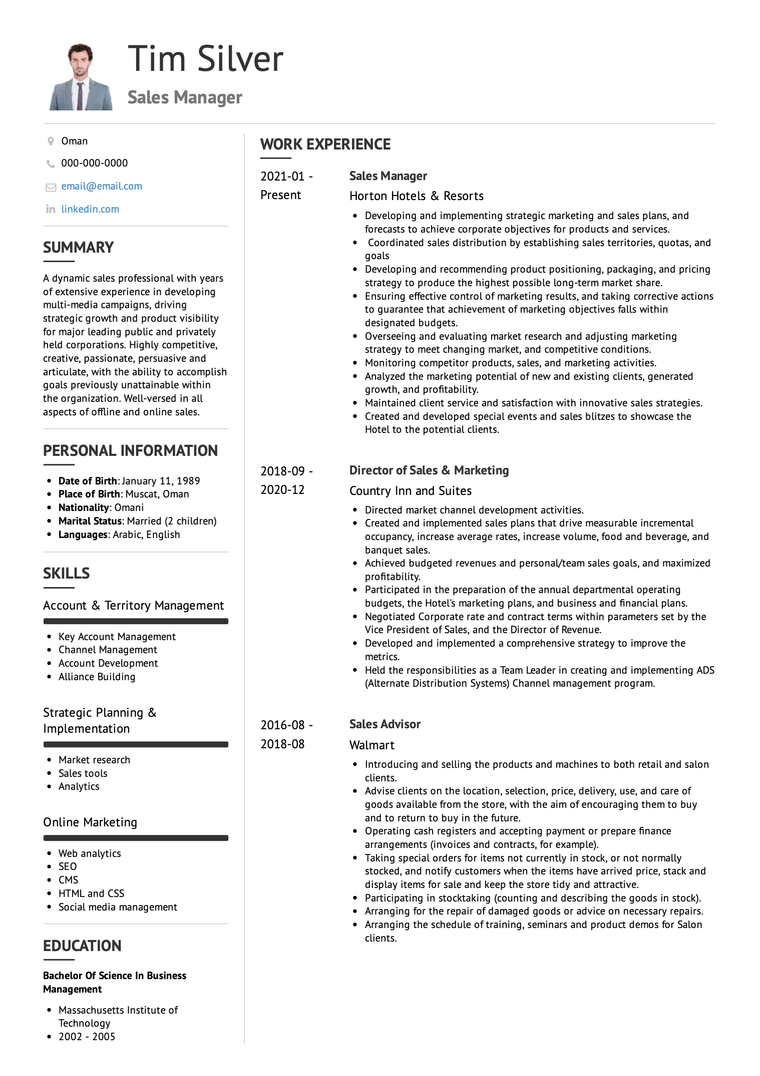
For a resume that really catches the eye, you could even try a more colourful resume template, like VisualCV’s Denali template.
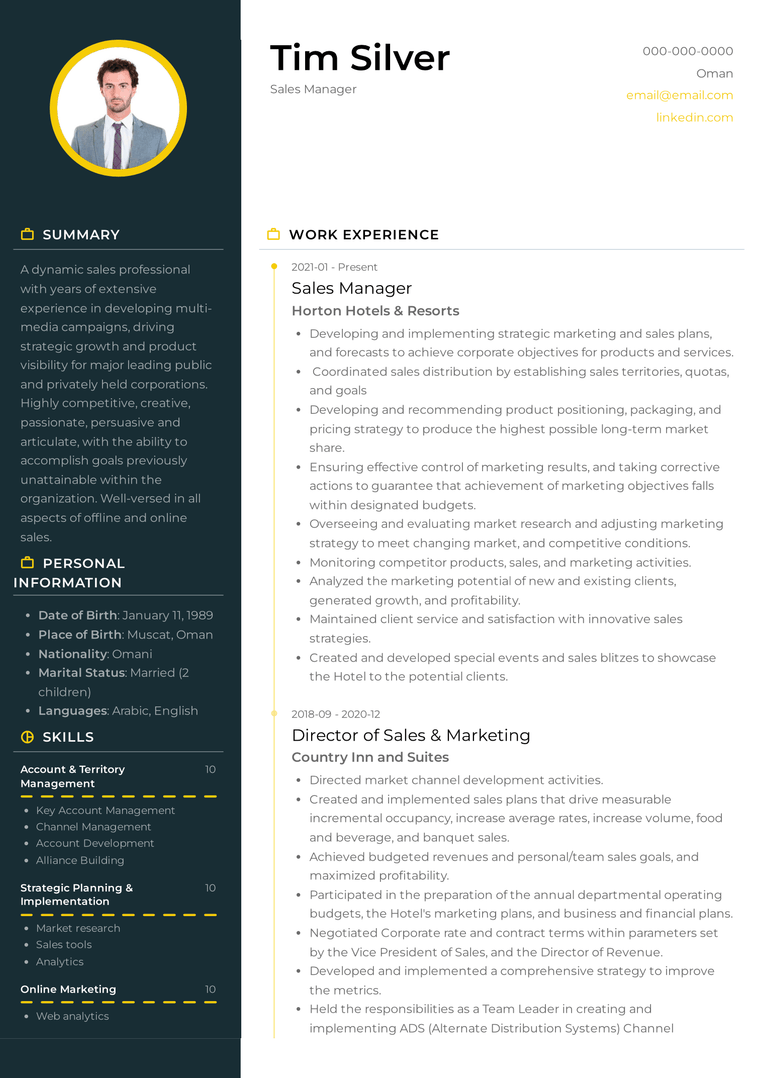
Copyright ©2025 Workstory Inc.